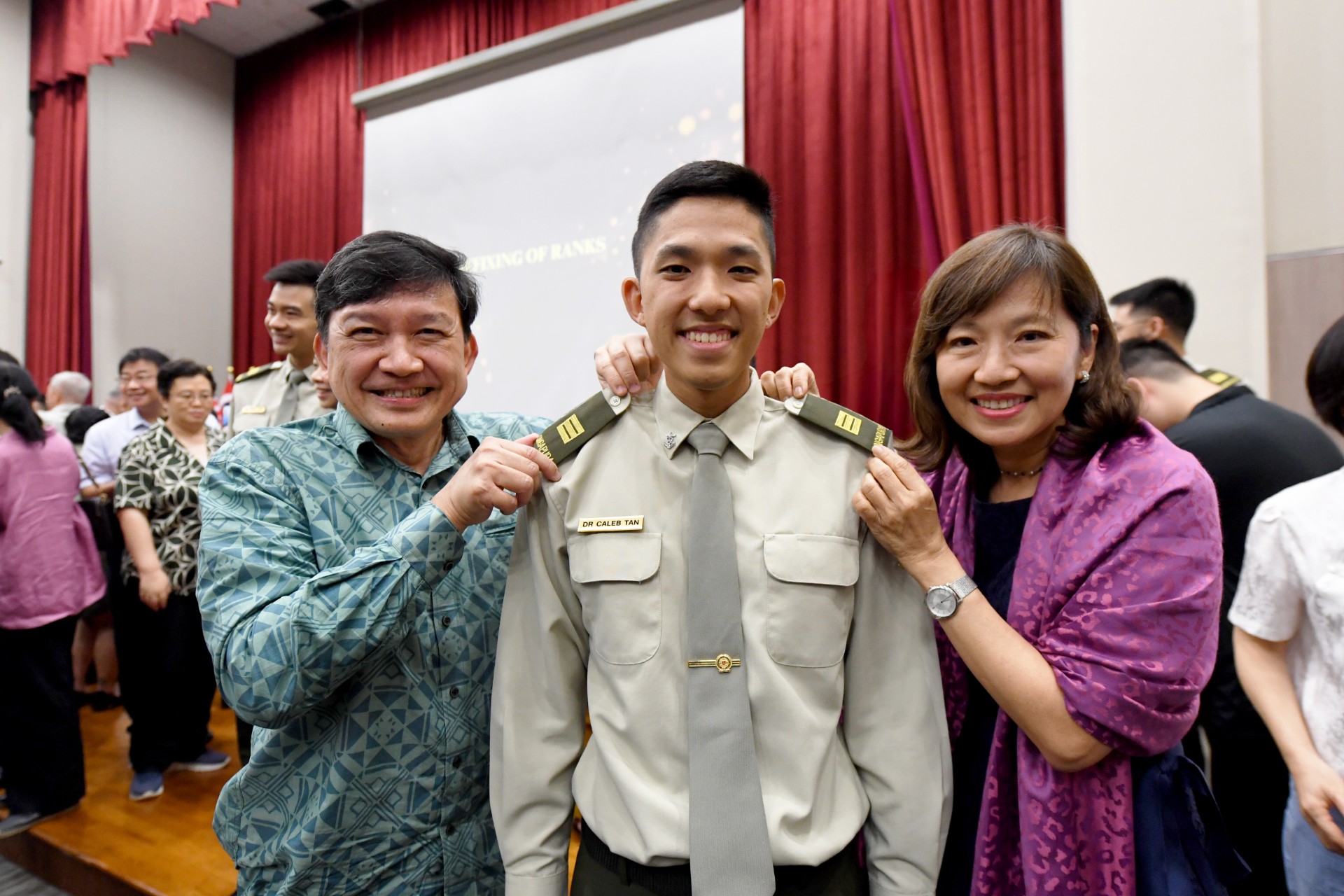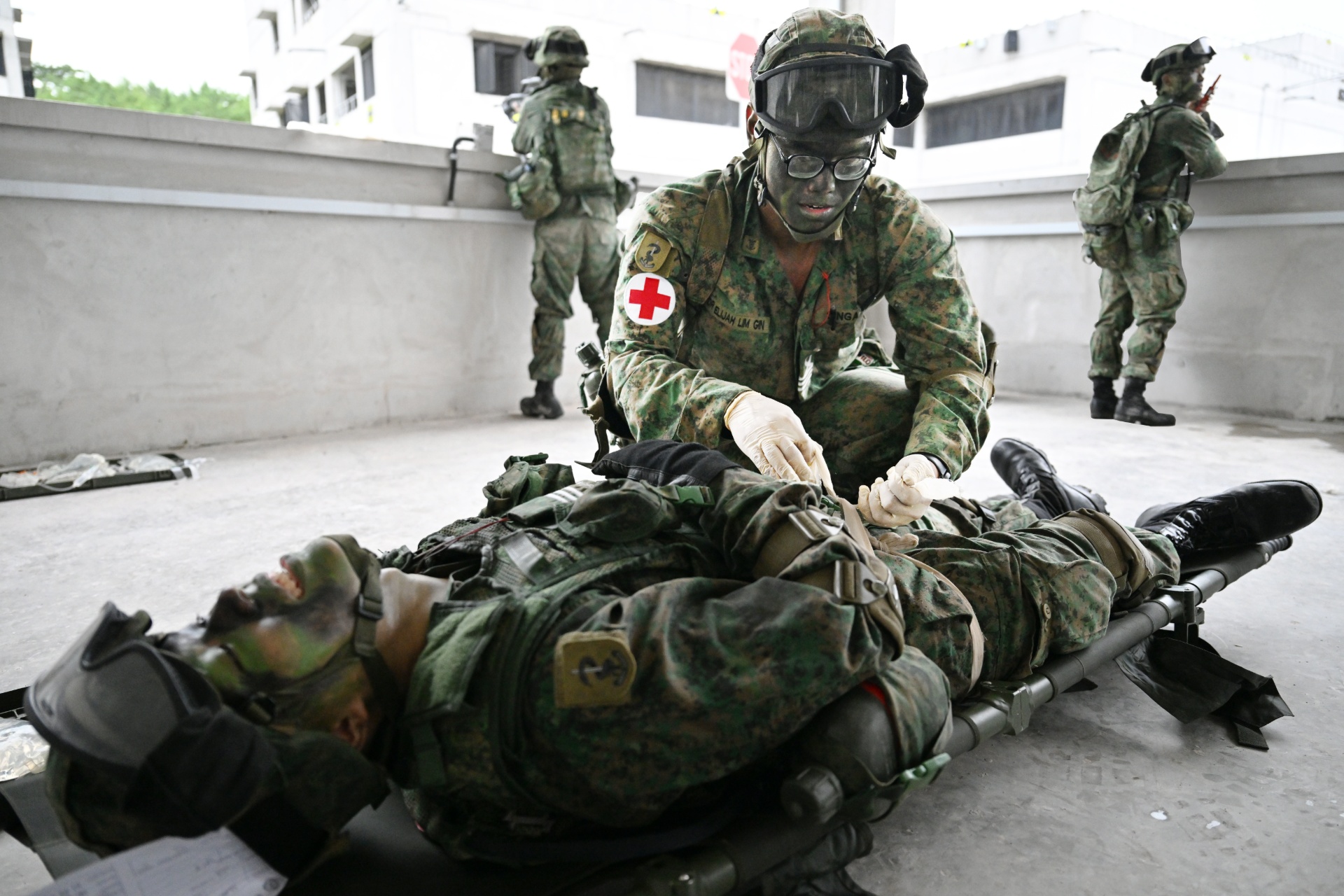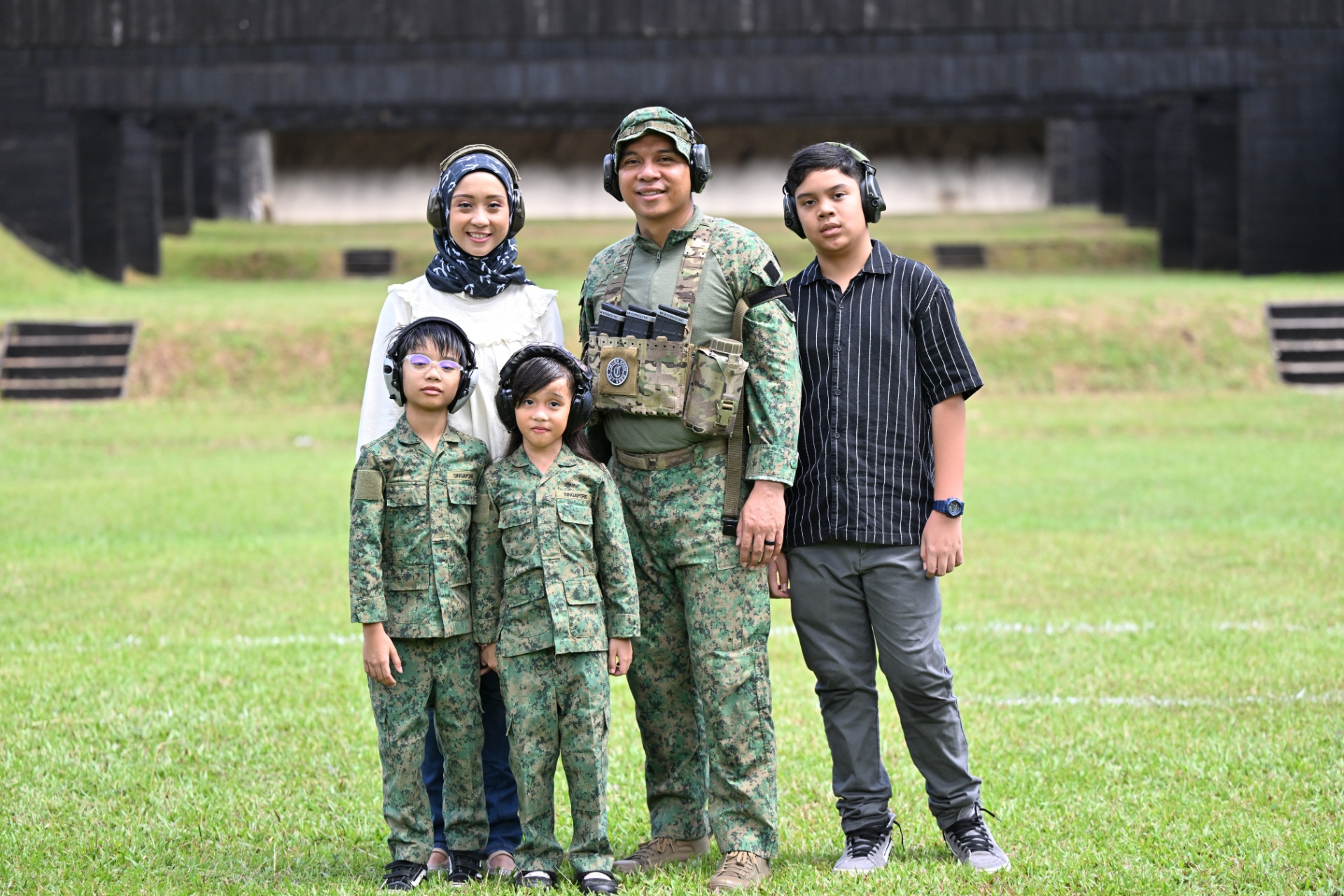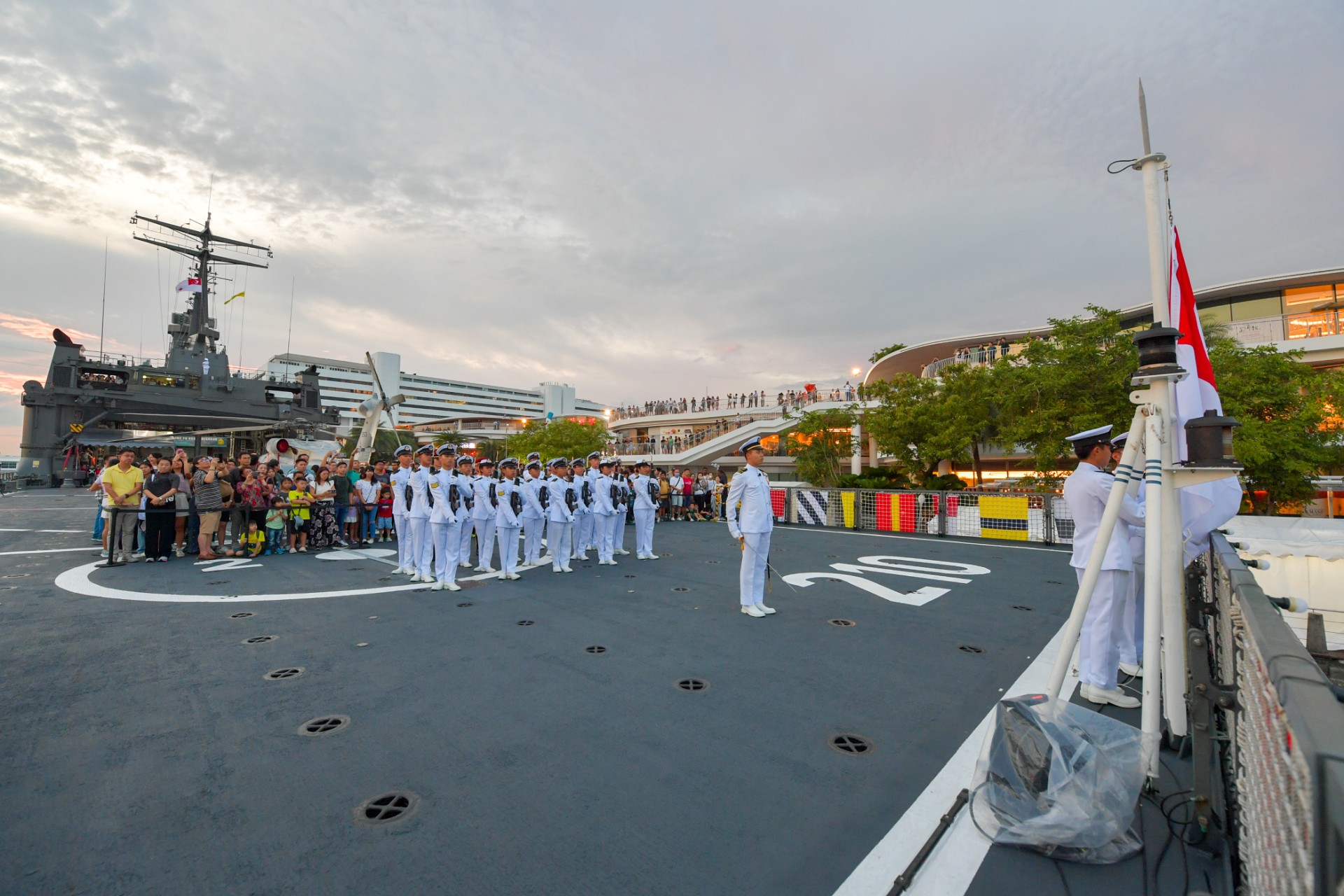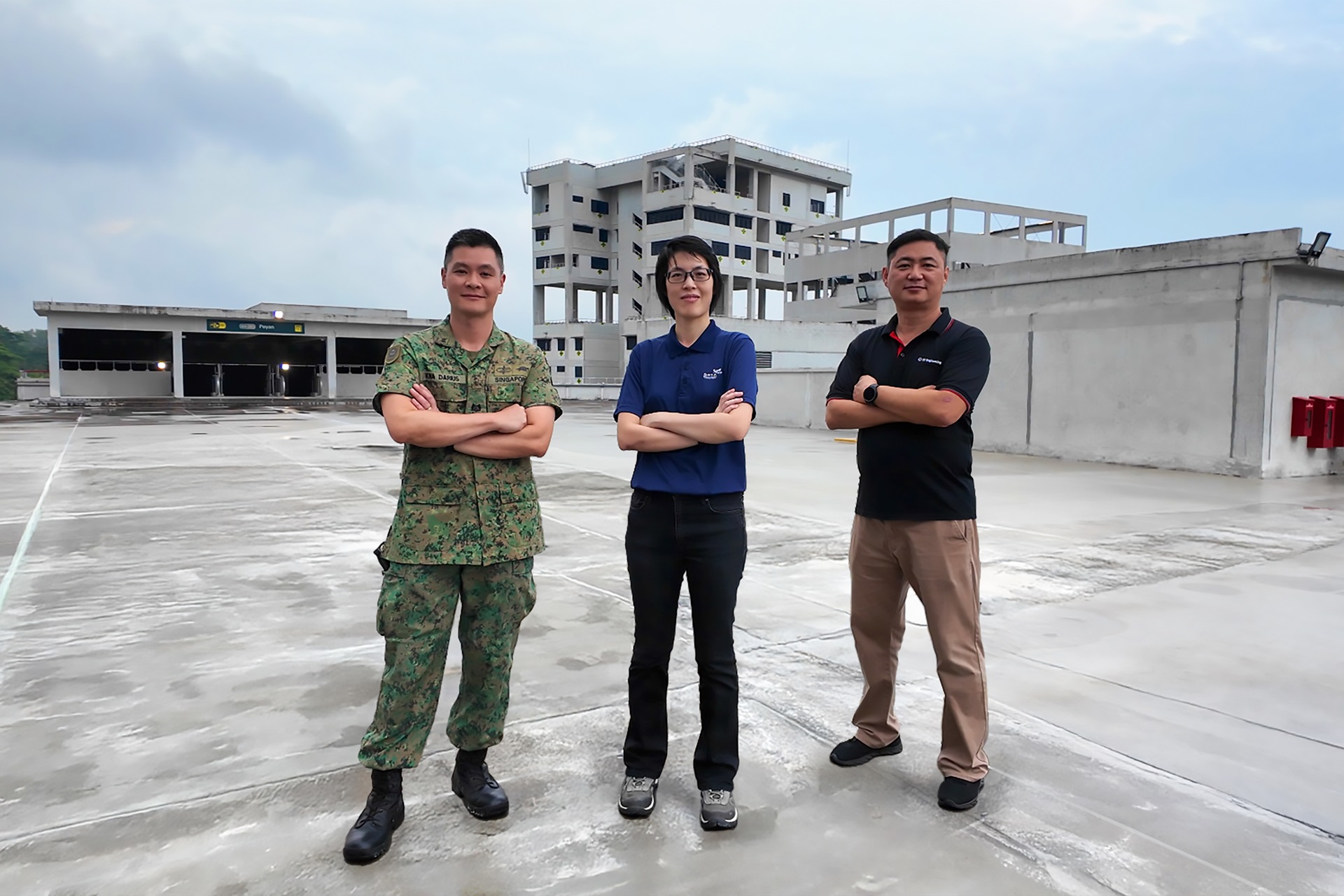STEADY AIM
PHOTO // PIONEER Photographers & Courtesy of Motorised Infantry Training Institute, Sniper Wing
They train hard, aim fast and you won t see them coming or going. Meet the sharpshooters of the SAF.
When it comes to military sharpshooters, the first thing that comes to mind is the sniper. The suspected presence of snipers alone can strike terror in the hearts of the enemy. Through intricate camouflage skills, these men are trained to complete their mission with a simple goal in mind: one shot, one kill.
On the other end of the spectrum, technology has enhanced most of the Singapore Armed Forces' (SAF's) weapon systems, especially in the Navy and the Air Force, to allow for precise targeting. Today's weapon systems can calculate the range of a target and the angle needed for an accurate shot within mere seconds, freeing up servicemen to focus on other areas.
But does this mean that the shooting skills of these sailors and airmen have been rendered obsolete? Find out how the SAF strikes a balance between skills and technology. After all, there is but a fine line between the two.
Stealth in the shadows
Deep in the thick foliage, they lie in wait for their target. It has been about two hours, but not once have they taken their eyes off their scopes.
Tucked away in their hideout and camouflaged in their ghillie suits, the sniper team keeps movement and sounds at a minimum throughout their wait.
The target appears. They adjust their aim as needed, take a deep breath, and fire.
Snipers are first selected from the Specialist Cadet School and put through a 13-week course, which consists of a nine-week Basic Sniper Course (BSC) and a four-week leadership course. The BSC is also open to all SAF regulars, foreign military students and units from selected external forces such as the Singapore Police Force. During the BSC, all sniper candidates train together regardless of their ranks and appointments.
Mind your Ps
Precision, Perseverance and Patience are three Ps that trainees will come to remember by heart in the course of their nine weeks of training.
During the first part of the course, they are trained at an open range where they learn precision shooting at different distances without being subjected to environmental factors like wind, air pressure and humidity. This equips them with basic skills and tests their accuracy.
The accuracy of their shots is first tested at the 100m range through a calculation called minute of angle (MOA). MOA is a standard measurement for the accuracy of a rifle. At 100m, trainees' shots would have to land within 1.5 MOA.
Out of five shots, four have to land within the stated area. Trainees have to accomplish this twice in order for their shots to be considered accurate. Should they be unable to do it, they would be taken out of the BSC.
The trainees subsequently proceed to the field range where they learn to fire while accounting for environmental factors.
At this stage, the trainees are taught how to determine the direction and speed of the wind and how to take factors such as mirage, air pressure and gravitational pull of the earth into consideration. Based on these natural elements, they would have to adjust their aim accordingly.
Read your environment
Learning how to read these factors requires much practice and experience, and just assessing the type of wind can already be challenging, said sniper instructor Master Sergeant (MSG) Eric Yap.
"By looking at the way the branches or smoke are moving, we are able to determine the wind direction. We then use a wind formula to determine the speed of the wind and compensate by clicking accordingly on the windage at the scope to counter it," he explained.
Other than open and field ranges, the BSC also consists of three modules - shooting, navigating and stalking.
Shooting includes learning how to fire in open and field ranges. Navigation involves an open and closed terrain navigation exercise and a two-day-one-night exercise.
A sniper has to think through a shoot from start to end from getting to the objective without being caught, where to camouflage and the best place to shoot from, and how to get out safely. During the night exercise, trainees must navigate through the jungle to locate the checkpoint, collect intelligence of the area and go through a sniper theory test.
Throughout this exercise, trainees also have to carry their ghillie suit and rifle, which weigh a total of 30kg, and walk about 30km. A ghillie suit is an outfit made of green, brown and black raffia strings meant for camouflaging purposes in jungles.
For stalking, the focus is to build patience. Trainees learn to search the vegetation for the ideal firing position. This is also where trainees put their concealment tactics into practice.
Trainees have to learn how to use the jungle environment to their advantage.
Sniper trainees honing their shooting skills during their field range training.
The field is my playground
MSG Yap explained that when camouflaging, there always needs to be depth in the terrain. For instance, if a trainee stands too near the edge of the vegetation or in a sun-lit area, he will be spotted. Blending in with the background is crucial and trainees need to find thick foliage, make minimal movements and conceal their muzzle well to avoid being spotted.
"Some trainees love to hide beside trees. However, hiding beside trees might produce an awkward shape (of a human) as tree trunks are usually straight. We call that a tumour. This will easily give their position away."
The 30-year-old from the Motorised Infantry Training Institute explained that the trainers are stationed at an observation post and once a trainee is spotted, he is taken out and sent back to the starting point. But this whole idea of hide-and-seek can be rather fun. "Once trainees think they are at the ideal firing position, we tell them to think out of the box to minimise the possibility of getting caught and some trainees end up climbing trees or hiding in bushes. It's a fun yet tiring process."
Just as they do jungle concealment, trainees also learn how to camouflage themselves in urban environments.
Sniper trainee 3rd Warrant Officer (3WO) Koh Peng Joo explained that in such scenarios, trainees will do away with the ghillie suit and instead cover the walls and windows of the buildings with dark-coloured material to conceal themselves. This allows snipers to hide in the shadows without being seen as a stark contrast against the white walls.
In good company
The 35-year-old Company Sergeant Major from 9th Battalion, Singapore Infantry Regiment joined the sniper course last November as he wanted to learn a new skill.
To him, the toughest part of the BSC was getting his shots on target. "It takes a lot of confidence to pull the trigger. I'm always trying to keep myself relaxed and remember my breathing fundamentals."
What helps to alleviate his stress is having a good partner whom he can connect with. Snipers generally work in pairs where one is the firer while the other is the spotter.
The spotter carries the observation scope and a semi-automatic weapon while the firer carries the bolt-action rifle. The latter's weapon is the most ideal for precision shooting as the loading of the rounds is done manually. This makes for a more consistent propelling force, which in turn makes the rifle more accurate.
When it comes to spotting targets, the waiting can take up to days. This is where the spotter and firer will take turns to be on the lookout.
When the target is spotted and the firer can get a good shot, he will take aim. Should he miss, the spotter then helps by telling the firer how to adjust his shots.
Snipers also make use of technology like the wind meter and ballistic calculator to determine the speed of the wind and how the aim should be adjusted to compensate for these factors.
One shot, one kill
MSG Yap said that while using technology can increase the percentage of hitting the target in one successful shot, most snipers usually rely on their fundamentals, experiences and instinct to fire a shot.
These skills are put to the test during the Unknown Distance Shoot Test, which is conducted during the final weeks of the BSC. With an unknown target distance, trainees have to calculate the angle while taking into consideration the environmental factors.
"A good sniper is not only able to shoot, he must also be able to correct his own shots by clicking the scope," explained MSG Yap.
"In the Unknown Distance Shoot Test, we will give him five minutes to calculate the distance and consider the environmental factors before firing his first shot. If he misses, he has five seconds to correct and engage again. This teaches him to correct his shots faster."
At the end of the day, besides teaching trainees the basic techniques, the BSC is essentially about discovering oneself, and feeling comfortable when firing. If a trainee is not used to certain positions or methods taught by the instructors, he might feel awkward when shooting and this could affect his performance.
"As long as you feel comfortable, how you breathe or prone is none of my business. As long as you hit the target, it's a good shot," said MSG Yap.
"A good sniper is not only able to shoot (but)... must also be able to correct his own shots by clicking the scope." - MSG Yap
The cooperative lasing tactic between Apaches and other aircraft was demonstrated in the recent Exercise Forging Sabre 2015.
CPT Chua feels that the integration of weapon and technology into one weapon system can deliver more precise shots faster.
Technological instinct
Firing precise shots from the air is never easy. But when you have the aid of technology, nothing is impossible.
After getting their wings as helicopter pilots, Apache AH-64 attack helicopter trainees undergo a year-long training to learn how to handle the aircraft and operate the weapon systems. With the Apache's arsenal of guns, missiles and rockets, its weapon system makes it one of the best attack helicopters in the world.
Each of these weapons performs different functions. The Hellfire missiles are meant for precision strikes on armoured vehicles or high value targets.
On the other hand, the 30mm M230 Chain Gun and Hydra-70 rockets are used to attack soft-skinned targets like armoured personnel carriers or jeeps.
Behind enemy lines
Besides being an area weapon system, the 30mm chain gun can hit targets up to 4.2km away in air-to-ground combat.
Said Apache pilot Captain (CPT) Eugene Chua: "We can give close air support for troops under enemy fire, especially with the use of the 30mm chain gun."
The 28-year-old from 120 Squadron added that the chain gun can be controlled through the pilot's helmet-mounted display, up to an angle of 86 degrees left or right, and that he can fire at a target merely by looking at it.
As the targets may look small to the human eye because they are so far away, the pilot can use the Target Acquisition and Designation Sight (TADS) which employs sensors like the Day TV and the Forward-Looking Infra-Red systems to allow him to zoom in on the target, identify and fire at the target more accurately.
Seek, lase, fire
CPT Chua said: "When you lase a target on the TADS, the range is computed by the aircraft and it is able to provide real-time updates while aircraft is moving. This provides precise range data to the weapon systems for precision targeting."
Having three weapon systems on board the Apache may leave the pilots spoilt for choice, but it all boils down to selecting the appropriate weapon for the designated target. CPT Chua explained that the pilot mainly makes his decision based on the type of the target (for example, if it is armoured or soft-skinned).
"The full arsenal of the AH-64D attack helicopter consists of eight missiles, 38 rockets and 1,200 rounds. When I have a higher value target, or want to take out something with armour that is not penetrable by the guns or rockets, I will take it out with my missile."
Precise techniques
While the Apache laser is used for getting the range and designation of targets, it can also assist in attacks by other platforms during a strike mission.
As Apaches normally operate in a fleet, this laser technology allows them to make use of each other's weapons to take out targets with greater accuracy in a shorter time. Called buddy-lasing, this tactic allows a pilot to link his missile to another aircraft's laser.
"If I can't see the target, I have another aircraft located in another position to designate the target for me. I will fire the missile and it tracks my buddy's laser till target impact," explained CPT Chua.
This lasing tactic was put to the test in the recently concluded Exercise Forging Sabre 2015, where Apaches, fighter planes and unmanned aerial vehicles worked together to take out enemy targets.
Other than laser-guided missiles, the Apache also carries radar-guided ones. The radar scans the target and sends the information to the missile to strike the target.
"With the advanced technology and capabilities of these weapon systems, we are able to conduct precision strikes and multiple engagements more quickly and effectively," said CPT Chua.
ME3 Phng (left) and ME1 Loganathan believes that no matter how good a technology is, it is ultimately the fundamental skills of the sailor which matters.
Man & machine
Out in the misty bobbing sea, a sampan has been spotted in Singapore waters. A Republic of Singapore Navy Patrol Vessel starts tracking it and identifies it to be hostile. Upon command, a sailor engages the 25mm Typhoon Gun and fires a shot at the propeller of the sampan.
Unlike the good old days where sailors had to brave high sea states and rough wind conditions on deck just to fire a shot, these attacks are all done in a control room with simply the press of a button.
Known for its short-range accuracy, the gun has a maximum effective range of 2,700m and is mainly used to deter pirates.
Weapon System Control (WSC) instructor Military Expert (ME) 3 Reuben Phng explained that the gun needs to be accurate as the crew is dealing with small boats like sampans, sea boats and smugglers. The accuracy of the shots can go up to 90 percent.
"When we fire, we are not trying to destroy the sampan.
We are trying to disable it to prevent it from moving further. This is where accuracy plays a part. We fire at a specific spot, like the propeller, as we do not want to hurt anyone on board the vessel," said the 35-year-old from the Naval Military Expert Institute.
Intelligent sensors
When it comes to getting a good aim at the target, the Typhoon Gun operator first tracks the target in wide view through a video screen. As the video screen is linked to the electrical optical sensor on the side of the gun, the operator can see what is happening out at sea from the control room.
Using the joystick, he lines up the crosshair on the target. This allows the sensor to lock onto the target. During this process, information such as the speed at which the target is travelling, the wind speed and the wind direction will be recorded and compensated for by the system.
The operator subsequently zooms in on the target and makes finite adjustments to the crosshair by placing it on the specific spot he wants to fire at. Once the crosshair is on the target area, the operator will press the button to fire.
"Everything is done within a split second. Regardless of the sea state, the rounds will definitely hit the target," said ME3 Phng.
Even if the target is bobbing from left to right, the system automatically computes the future impact point of the rounds such that it will be a precise hit.
Back to basics
While it may seem that the Typhoon gunners are heavily reliant on technology, should technology fail them, these sailors must use their own skills to get an accurate shot.
ME3 Phng explained that the operator would have to be in zoom-out view to track the target. During this time, he would also have to obtain the range of the target from the navigation crew to manually input it into the system.
"So firing manually might have a delay of up to 10 seconds as we will need to get the information from the navigator," he said.
"We (also) need to assess the speed (of the target) and know where exactly it might be when we fire our rounds. The operator needs to be experienced enough to make this assessment."
ME1 Loganathan showing how, if technology fails, a sailor has to be on deck to adjust the weapon manually and fire the shots. He would be wearing protective gear and helmet with a headset for communication.
Accuracy tactics
For fast moving targets, operators can make use of both the wide and zoom-in views to track them.
ME1 Loganathan, who has been operating the Typhoon Gun for two-and-a-half years, said that a speeding target would seem slower if it was tracked from a wide view. He would then zoom in to get a clearer picture.
Alternatively, operators can switch to the offset method, a technique usually used if the targets are either too small or moving too fast.
"This is when operators track onto a nearer and larger boat within the same zone, while shifting the gun to the actual target," explained the 25-year-old WSC supervisor from RSS Justice.
He added that only by locking onto another object would the system be able to obtain an estimated range and data of the actual target.
"If we don't lock onto something, the gun will not be accurate," he said.
Known for its accuracy, the Typhoon Gun is primarily used for anti-piracy missions.
Technology vs techniques
While technology is a great aid, the operators know that at the end of the day, their skills and experience are still their greatest assets. This is why the course instructors never fail to drill the basic knowledge into their trainees. Some of these include fire control and how to manually compute the data according to the movement of the target.
ME3 Phng said: "How the gun works, how the rounds travel - these are knowledge they (trainees) should have. Once grasped, they are able to visualise at what point they should aim and how they should fire the gun.
"We may rely a lot on technology, but we always have the skillsets to fall back on if the system fails. This is what we will always be trained for."
5 things you didn't know about the SAF Shooting Contingent
Since its formation in 1991, the SAF Shooting Contingent (SSC) has earned itself a name in regional competitions such as ASEAN Army Rifle Meet (AARM). But how much do you know about them?
Let long-standing members Head Coach of Rifle Team 3rd Warrant Officer (3WO) Normanshah and Pistol Ladies Team member 2WO Pheong Siew Shya give you the lowdown!
Attitude matters. 3WO Normanshah: "From the attitude alone, you can see if the guys are coachable. Anyone can become a good shooter with the right attitude. So the right attitude is the one thing that I look out for first."
5 - The number of disciplines in the SSC. They are the Rifle Team, the Carbine Team, the General Purpose Machine Gun Team, Pistol Men and Pistol Ladies.
The cobra position is one of the toughest kneeling positions to get into.
Jack of all trades, Master of one.
Not only do shooters need to know every single position, they have to master one type of shooting position from each category including proning, sitting, kneeling, squatting and standing. Just within the kneeling position, there are at least 10 different variations.
A pistol men's shooting competition during the Army Shooting Meet.
Three competitions per year - the SSC participates mainly in the Australia Army Skill at Arms Meeting, the biennial Brunei International Skills and AARM.
3WO Normanshah: "AARM is the one that we want to do well at. The rest are for competition exposure."
AARM has gone from a very friendly competition to a very keenly contested one. 3WO Normanshah: "Due to the ASEAN spirit, we never outwardly rank the countries but on the sidelines, everyone will be calculating who is on top and so forth. In this region, AARM is the only platform where we can see which country is the best. It's an unspoken rule to never reveal it, but we all know who is top."
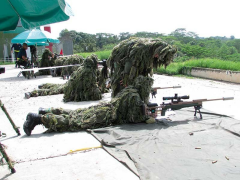
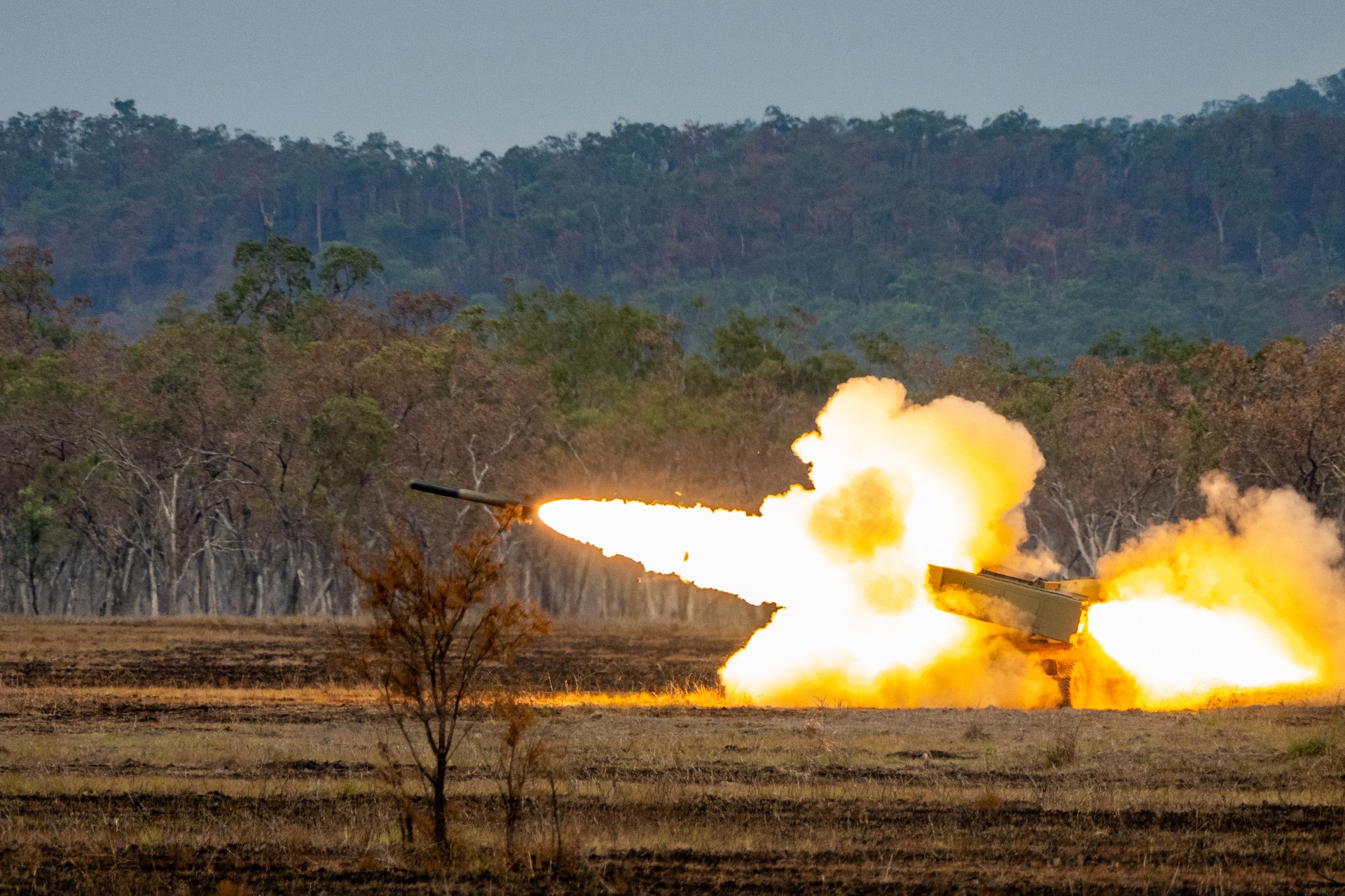
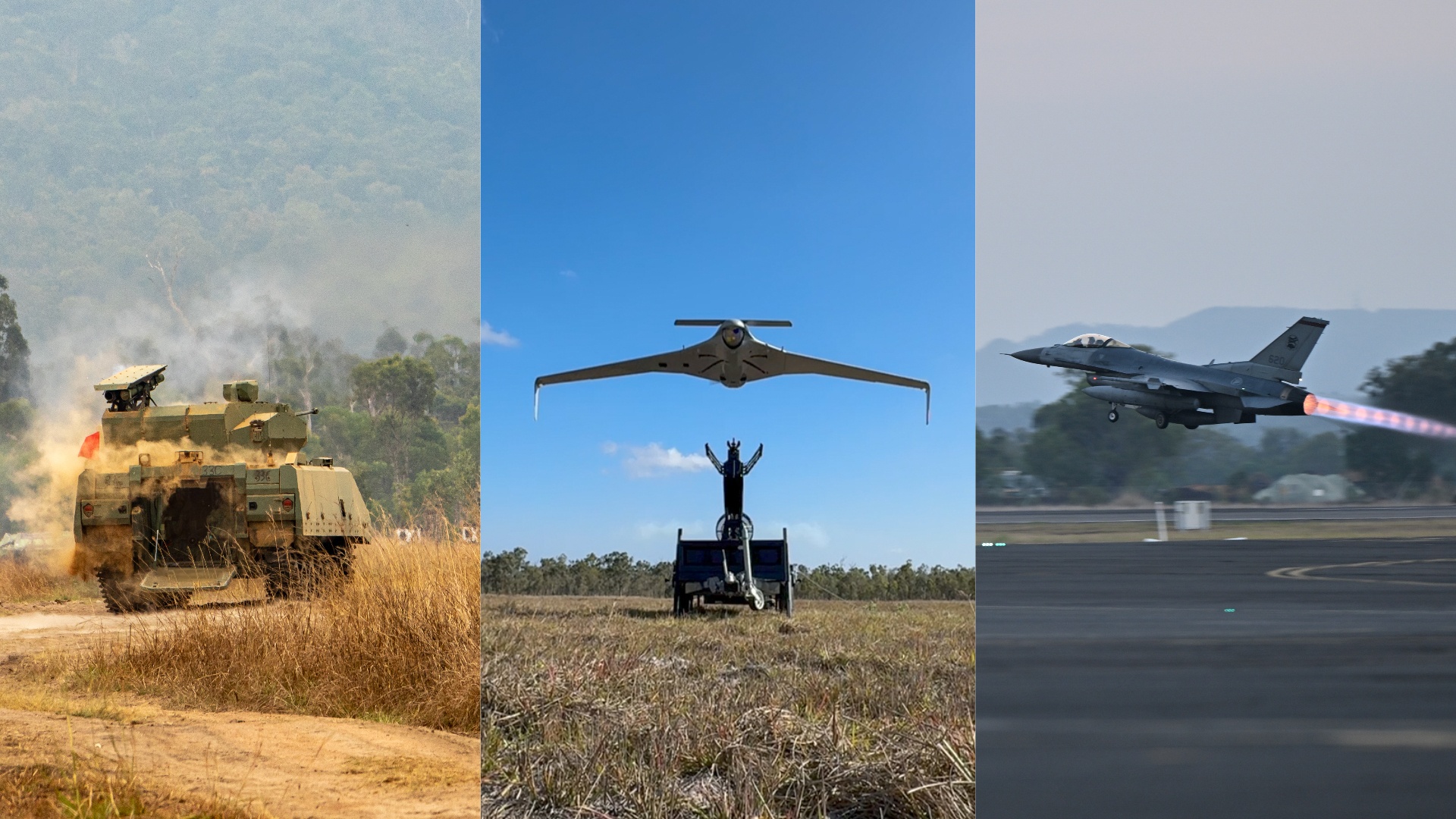
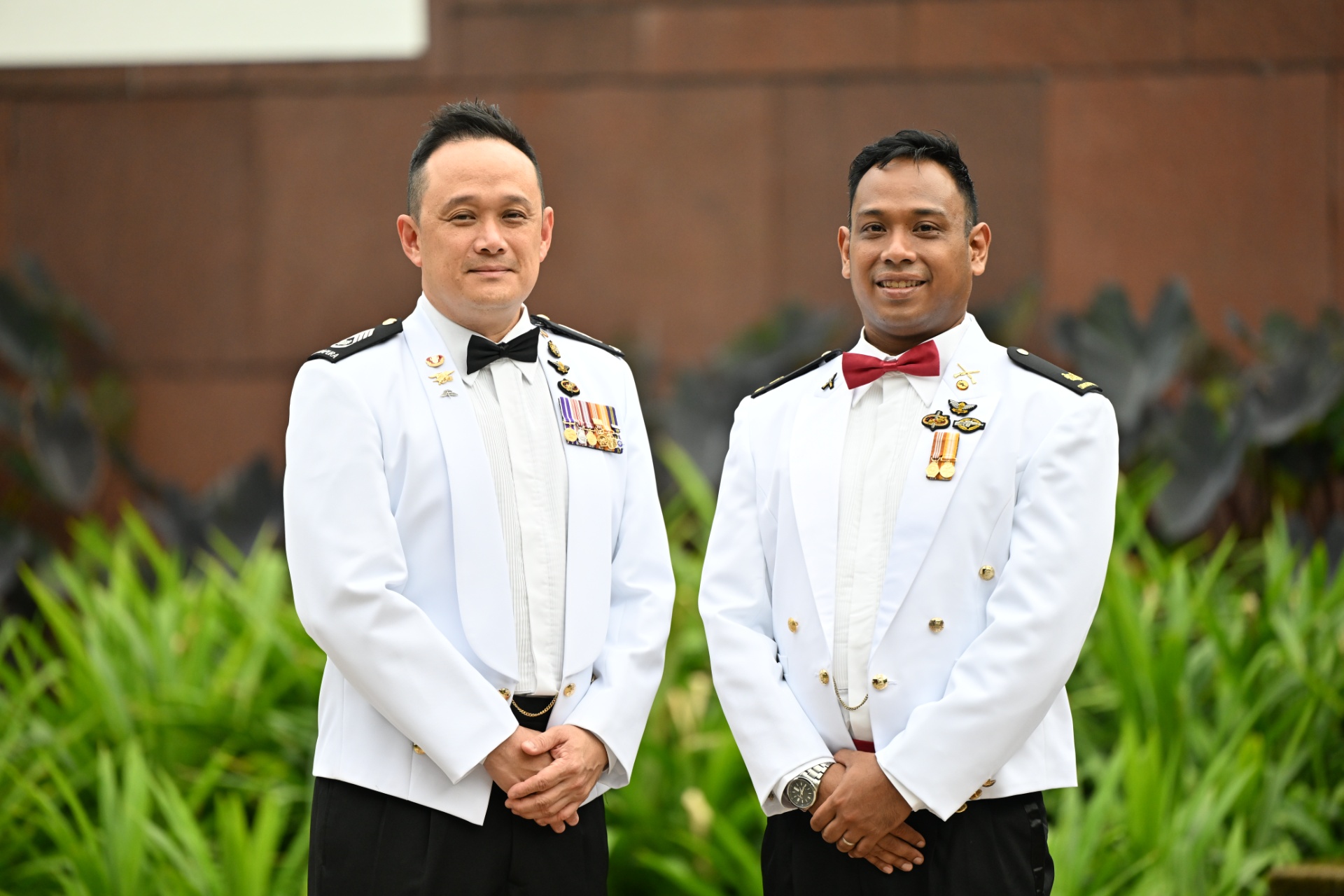
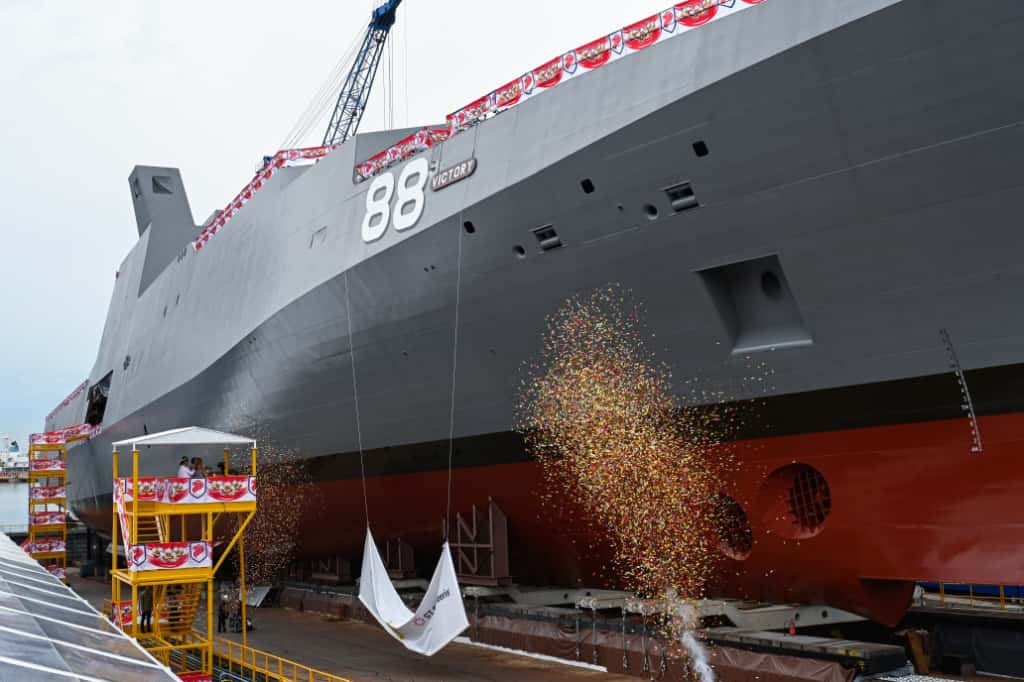
-dsc_2181.jpg?sfvrsn=cf8a503f_1)
